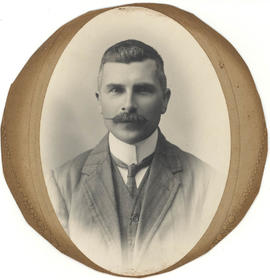http://www.britannica.com/EBchecked/topic/396049/Sir-Ferdinand-von-Mueller
Born 1872; died 1965. Plant collector
George Cave trained as a Kew gardener, graduating in 1895. In 1896 he became assistant at the Botanic Gardens, Calcutta and in 1900 was appointed Governor of the Cinchona Plantations, Mungpoo (Bengal). In 1904 he became curator of the Lloyd Botanic Garden, Darjeeling. He went on numerous plant collecting tours in Tibet, Nepal and Sikkim and some diaries from these tours are held by the Royal Botanic Garden Edinburgh.
Sources: Desmond; Rowena Cave, ‘George Cave’s Diary, Sikkim 1906’.
D.W.
Frank Ludlow graduated from Cambridge in 1908 with a BA in natural sciences and on leaving university was appointed vice principal at Sind College, Karachi. During the First World War he served in Mesopotamia after which he went to Poona as Inspector of European Schools. In 1923 he opened a new school at Gyantse, Tibet. Although this closed in 1926 he remained on good terms with the Tibetan government and was almost uniquely allowed access to that country for a number of years. In 1927 he retired to Srinigar in Kashmir and from this date started travelling extensively, collecting birds and plants for the British Museum of Natural History. In 1928 he met George Sherriff in Kashgar in Chinese Turkestan and with their shared interests in ornithology, travel and plants they began a lifelong friendship which led to a series of major expeditions to the Eastern Himalayas and South East Tibet. During the 1930s they trekked through the Tian Shan mountains, Sikkim, Bhutan and Tibet, collecting thousands of plant specimens, though on these journeys Ludlow was more concerned with the collection of birds on which he wrote extensively. During the Second World War Ludlow was in charge of British Mission in Lhasa from 1942 to 1943 and was Joint Commissioner in Ladakh from 1940-42 and again from 1943-46. He continued collecting in 1946 setting off for South East Tibet again with Sherriff. Their sixth and final great expedition together was collecting alpine and temperate flora in Bhutan in 1949. They both returned to Britain in 1950 where Ludlow spent his remaining years working on their collections in the British Museum.
Sources: R. Desmond ‘Dictionary of British and Irish Botanists and Horticulturalists; obituary folder; H.R. Fletcher ‘A Quest for Flowers’.
D.W.
Born London 1921; died 1991
J D A (Adam) Stainton was educated at Winchester College and Oxford University where he read history. He joined the Scots Guards in 1940, serving in North Africa, Italy and Northern Europe. After the war he returned to Oxford, completing his degree in 1948. He then worked as a barrister until 1952, but with family wealth abandoned this career to become a plant collector. Having consulted the British Museum (Natural History) on botanical travel he joined, totally at his own expense, Museum expeditions to Nepal in 1954 1956. He went on further collecting trips to Chitral, Greece, Turkey and North Borneo between 1958 and 1961; and from 1962 to 1972 to the Himalayas. Self taught in botany and ecology, Stainton was the author of ‘Forests of Nepal’ (1972) and the photographically illustrated field guides ‘Flowers of the Himalayas’ (with Oleg Polunin 1984) and Supplement (1988). Stainton identified Meconopsis autumnalis, the Nepalese Autumn Poppy and 36 species, mainly from Nepal, bear his name.
Source: WT Stearn ‘Taxon’ International Association for Plant Taxonomy
D.W.
